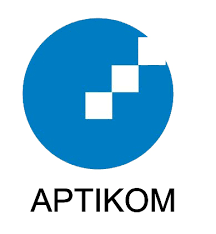Water Level Monitoring System Simulation Using Flutter Framework in Pekalongan City
DOI:
https://doi.org/10.18196/eist.v2i2.16859Keywords:
android, flutter, google maps platform, firebase, Pekalongan City, Tidal Flood, SimulationAbstract
Pekalongan City is a region on the northern coast of Java with a sloping topography and is susceptible to the increasing sea level, which can result in tidal floods. As previous research revealed, ten villages in three districts, including coastal areas, are vulnerable to tidal floods. Moreover, the vulnerability analysis based on BNPB Head Regulation (Perka) No. 2 of 2012 unveiled that seven out of ten villages in three districts have a high risk of tidal floods. Pekalongan City experienced a tidal flood that swamped 16 villages in three districts at the beginning of 2021. It was the result of heavy rains and strong tides along the northern shore. The tidal flood caused damage to a variety of sectors, including agriculture, communities, infrastructure, and clean water sanitation. Information technology development was employed in disaster management, making it simpler to acquire data for predicting future disasters, obtaining data in disaster-affected areas, and implementing mitigation in disaster-prone areas. This study collected data through interviews and a literature review. This research created Android applications simulating a water level monitoring system using the flutter framework. Firebase was utilized as a database for authentication, while Google Maps Platform was deployed to display maps during the application simulation. It is anticipated that the simulation of the water level monitoring system will be the first step in building the water level monitoring system in Pekalongan City. Hence, residents of Pekalongan City can utilize it to assist with mobility issues during floods.
References
Bernardi, R. (2021) “Banjir Kembali Landa Kota Pekalongan, 16 Kelurahan Terendam.” detiknews. [online] https://news.detik.com/berita-jawa- tengah/d-5361327/banjir-kembali-landa-kota-pekalongan-16-kelurahan- terendam [19 May 2021].
Cahyadi, A., Marfai, M. A., Mardiatno, D., and Nucifera, F. (2017) “Pemodelan Spasial Bahaya Banjir Rob Berdasarkan Skenario Perubahan Iklim Dan Dampaknya Di Pesisir Pekalongan.” [online] https://osf.io/preprints/inarxiv/wzter/ [23 August 2021].
Chariri, A. (2009) “Landasan Filsafat Dan Metode Penelitian Kualitatif.” [online] http://eprints.undip.ac.id/577/ [19 August 2021].
Lukman, M., Bagye, W., Fahmi, H., and Imtihan, K. (2019) “Pemanfaatan Teknologi Google Maps Api Untuk Aplikasi Pendetaksian Lokasi Rawan Kriminalitas Berbasis Android Studi Kasus : Desa Ganti Dan Desa Mujur, Kecamatan Praya Timur, Kabupaten Lombok Tengah.” Jurnal Informatika dan Rekayasa Elektronik, 2(1), Hal 52–59.
M Idhom, A. (2021) “Banjir Pekalongan Februari 2021 Lebih 1 Pekan, Pengungsi Masih 1500.” tirto.id. [online] https://tirto.id/banjir-pekalongan-februari- 2021-lebih-1-pekan-pengungsi-masih-1500-gaiX [19 May 2021].
Marfai, M. A., Cahyadi, A., Kasbullah, A. A., Hudaya, L. A., and Tarigan, D. R. (2017) “Dampak Bencana Banjir Pesisir Dan Adaptasi Masyarakat Terhadapnya Di Kabupaten Pekalongan.” [online] https://osf.io/preprints/inarxiv/m273k/ [7 September 2021].
Mertha, I. M. P., Simadiputra, V., Setyawan, E., and Suharjito, S. (2019) “Implementasi WebGIS untuk Pemetaan Objek Wisata Kota Jakarta Barat dengan Metode Location Based Service menggunakan Google Maps API.” InfoTekJar : Jurnal Nasional Informatika dan Teknologi Jaringan, 4(1), Hal 21–28.
Mirzaqon, A. (2018) “Studi Kepustakaan Mengenai Landasan Teori Dan Praktik Konseling Expressive Writing.” Jurnal BK UNESA, 8(1). [online] https://jurnalmahasiswa.unesa.ac.id/index.php/jurnal-bk- unesa/article/view/22037 [27 August 2021].
Pratama, N., Darusalam, U., and Nathasia, N. D. (2020) “Perancangan Sistem Monitoring Ketinggian Air Sebagai Pendeteksi Banjir Berbasis IoT Menggunakan Sensor Ultrasonik.” Jurnal Media Informatika Budidarma, 4(1), Hal 117–123.
Rahardjo, M. (2011) “Metode pengumpulan data penelitian kualitatif.” [online] http://repository.uin-malang.ac.id/1123/ [22 August 2021].
Sauda, R. H., Nugraha, A. L., and Hani’ah, H. (2019) “Kajian Pemetaan Kerentanan Banjir Rob Di Kabupaten Pekalongan.” Jurnal Geodesi Undip, 8(1), Hal 466–474.



